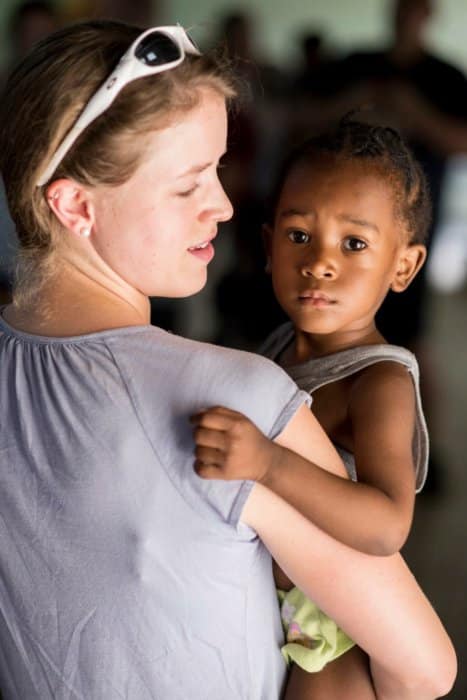 Saying no can be hard.
Saying no can be hard.
Some of us avoid saying it if we feel like we just don’t have the energy for another fight and we skirt around saying “No.” For others it brings up a lot of feelings. Feelings of resentment, guilt, anger or a general feeling of discomfort or unease. These feelings can coerce us into trying to disguise the fact that we are saying “No,” or we just avoid saying it at all.
 When we say “No,” often our children’s response is so difficult to listen to that we eventually feel that we have no choice but to give in. All of a sudden, your resolute “No,” turns into an exasperated, reluctant “Yes.”
When we say “No,” often our children’s response is so difficult to listen to that we eventually feel that we have no choice but to give in. All of a sudden, your resolute “No,” turns into an exasperated, reluctant “Yes.”
But here’s some news! When we say “No,” we are, in fact, giving our children a wonderful gift. Setting boundaries may mean our children’s feelings get bigger and louder (read big time tantrums and tears) but that is ok when this is exactly what a child needs to do to be able to move through their own challenges.
If you are struggling to say “No,” to your children, please take a look at these tips.
See “NO” as a gift
Every child has off-track moments. They may refuse to brush their teeth, they might get rough or ignore instructions.
Every child will ask for things that they just can’t have, or they may seem to keep asking for things that, but when they get them, decide that it is still wrong. That you are wrong!
Does this sound familiar?
“I want the red cup Mummy, NO, not that red cup the other red cup, NO I don’t want water, I want juice…”
Saying “No,” is a real gift at a time like this. When a parent says “No’ in plain language, softly and kindness attached, we also say no to trying to buy peace and quiet with a particular colour cup, or food, or blanket.
The clear verbal “No” opens the door to big feelings. And then the parent listens. In this way, the parent gives a “Yes,” to a nonverbal language of love.
And that warm, nonverbal “Yes” starts the healing process
Here's how this can look:
“No darling, you can use this red cup,” said softly, with love and warmth, and repeated if necessary.
Contrast this with: “NO!! NO MORE!! YOU ARE DRIVING ME BANANAS. JUST CHOOSE YOUR CUP.”
Or, “Ok, sure, I will get the other red cup. Oh! Ok! You want juice instead? Ok. I’ll get you juice. Oh! Not that kind of juice?
(Getting heated now!). “Ok, I’ll just go to the orange farm and get you the juiciest oranges there and hand squeeze them for you, darling. Will that make you happy?!!”
Move in close
Children will respond better to our “No’s” when they can feel that we are still by their side offering our love and care. Move in close when you say no. Take in the moment. Children pick up on non-verbal communication just as well, if not better, than they do with verbal communication.
If you are close by and allowing your child to feel that you still care, they are often already better equipped to accept your “No.”
Begin to understand how children emotions work.
If we watch our children closely we soon learn to pick up when their apparent reaction to us saying “No,” is actually a pretext to be able to release some big feelings that have been stirred up inside them.
Have you ever experienced that feeling when things have not gone your way and every little thing seems to upset you? As adults, we might bottle these feelings until we bust. Children look for ways to offload.
They, very cleverly, will seek out something “little” to fight against, to release their stored up feelings. Often it will be that little word “No.”
Take a moment
Try not to default to an automatic “No,” response.
Take a moment and ask yourself: Will it hurt my child? Will it hurt someone else? Is this behaviour or request acceptable for our family and our values?
If we are able to find a balance between saying yes and no, a no will become more effective and easier for our children to take. We will also feel better about ourselves as parents that we are being mindful and respectful when responding to our children.
Be playful with NO
So many of us feel like a no has to be barked, but just the opposite is true. No can be soft, and effective. It can even be funny.
But to get to a softer no, you may have to practise a little. If you were raised hearing no said harshly, you may be sensitive to it. Try to work through the experience by giving the no in an Opera singing voice, or whisper it very softly and secretly. If your child begins to laugh you have already relieved some tension around the situation. Here's 17 ways to say no kindly to your child.
Listen
Be prepared to listen to ALL the feelings that may arise after you say “No.”
Offer your listening.
Offer connection.
Say little, move in close and allow them to clear all the gunk out of their way. Give them the support and attention they need so their minds can absorb your love again.
Patty Wipfler of Hand in Hand Parenting reminds us that by listening to ALL of our children’s big feelings we are helping them learn many things. Including how loved they are, even when they are feeling (and perhaps seemingly acting) their worst! Listening to your child’s feelings the whole way through will help them to think well again and move on from whatever hurt is holding them back. You can read more about why children need to cry in this article, Let's Talk About Crying.
Be listened to
Us hardworking parents really do need support in this complex, emotional work. If you can, find someone to listen to you talk, cry and laugh about how hard you find it saying “No.” Try talking through how it FEELS when your child has big feelings that arise each time you say “No.”
By having someone who can listen to you (without giving advice, judgement or interrupting you) you will have a space to problem solve WHY you get triggered in certain situations and a place to work through the frustrations of parenting. You will be surprised how powerful this can be.
The world is full of obstacles and challenges that your child won’t fully comprehend yet and their big feelings may arise again and again, but if we are able to say “No” with love and set clear, firm boundaries they wont be left fighting those uncertainties and setbacks, which is what happens when the limit is not clearly reinforced.
They also won’t be left feeling hopeless, like a “bad” child, which can be the result of stricter, more authoritarian, limit setting.
“No” is a little word, with a lot of influence.
When we begin to understand that our child knows exactly what they are doing when an upset arises, the payoff is huge. Your no can be a gift that helps and brings change.
There is nothing like the feeling that you have partnered with your child by helping them heal a hurt in a unique and lasting way, while, at the same time, nurturing and strengthening your connection in a way that allows them to thrive. Feelings that will last a lifetime.
Get Hand in Hand's free guide to setting limits here, or join listen to this free call for a three-step-plan for setting limits without yelling or threats.Save
